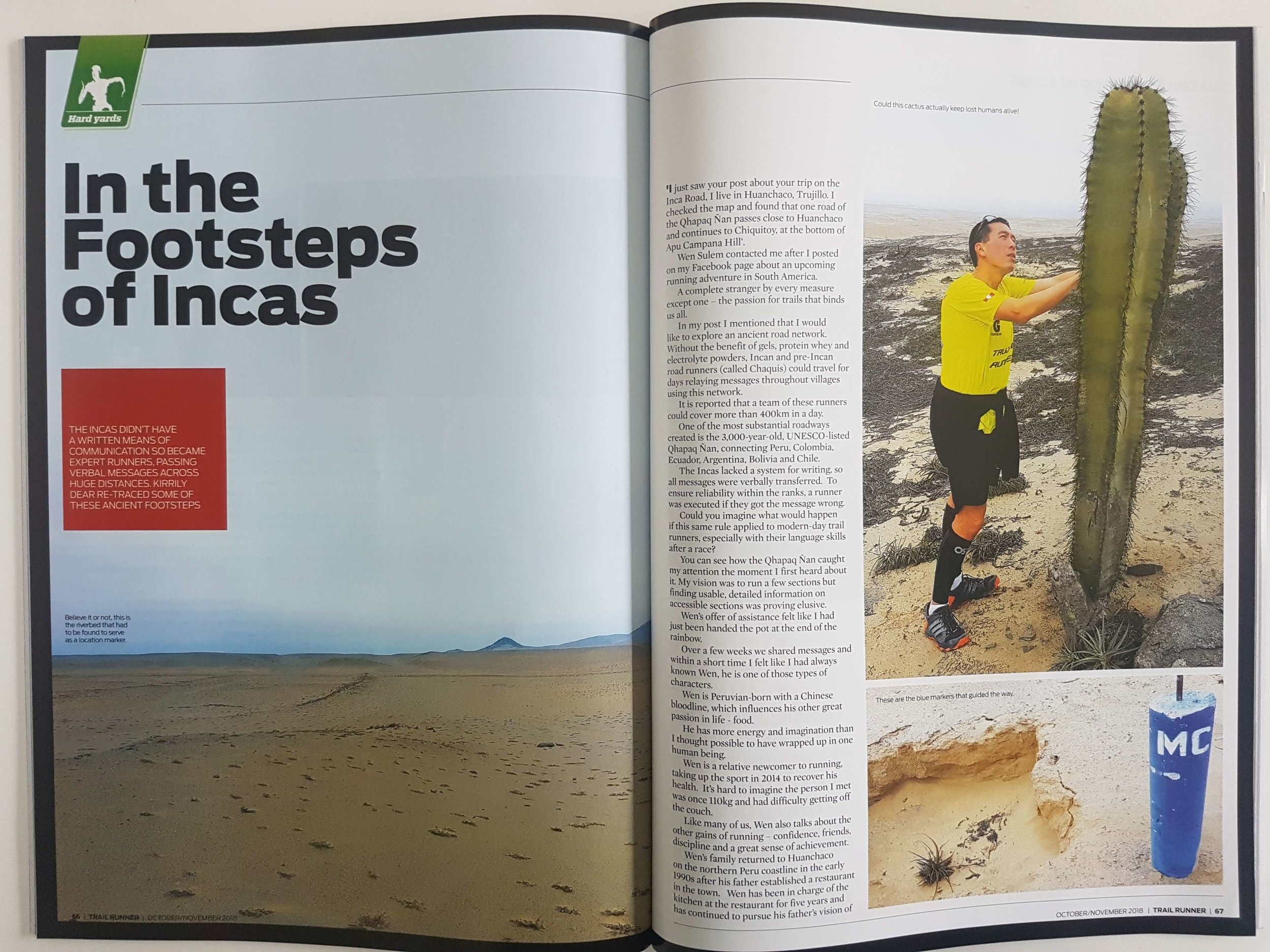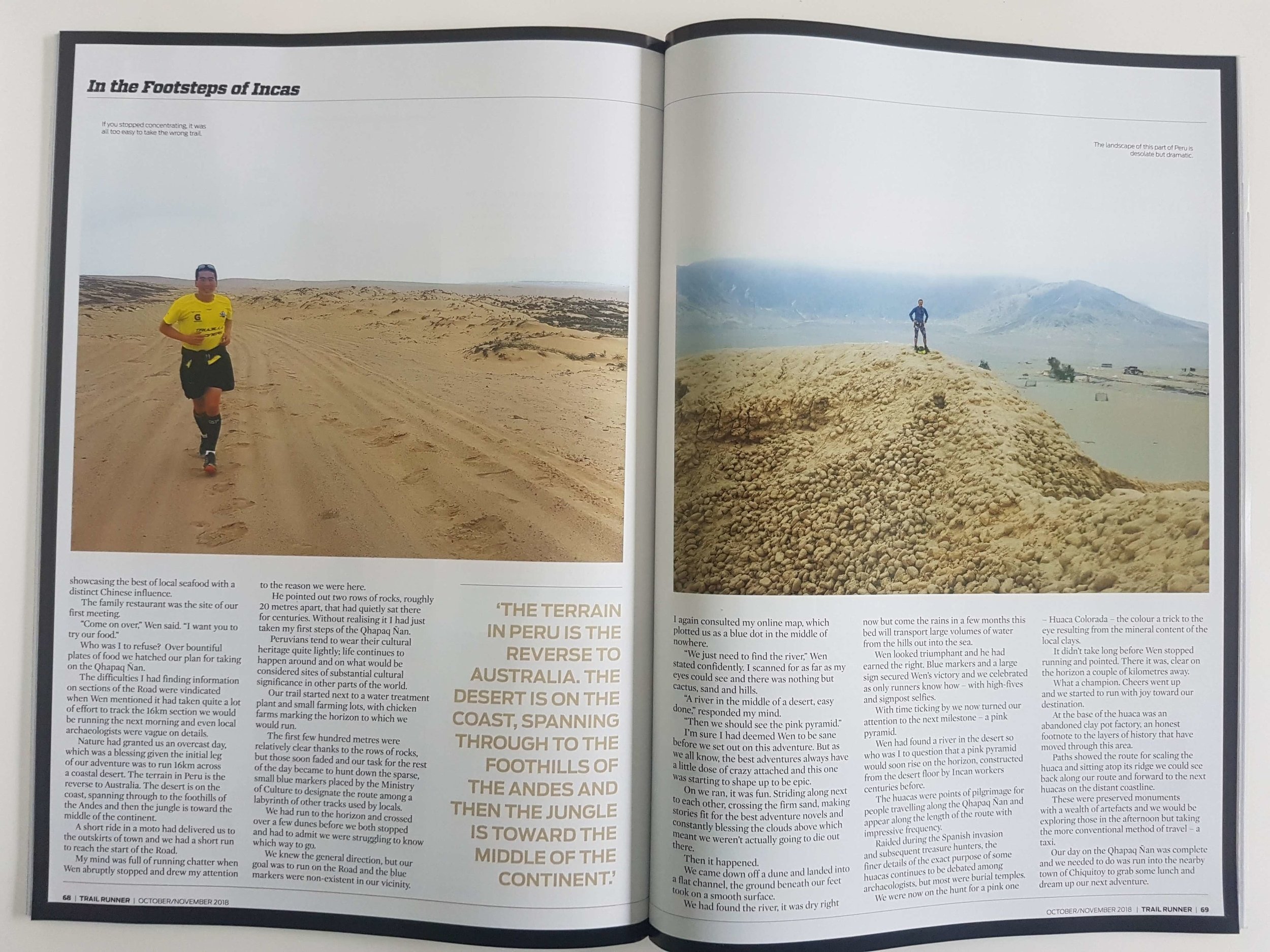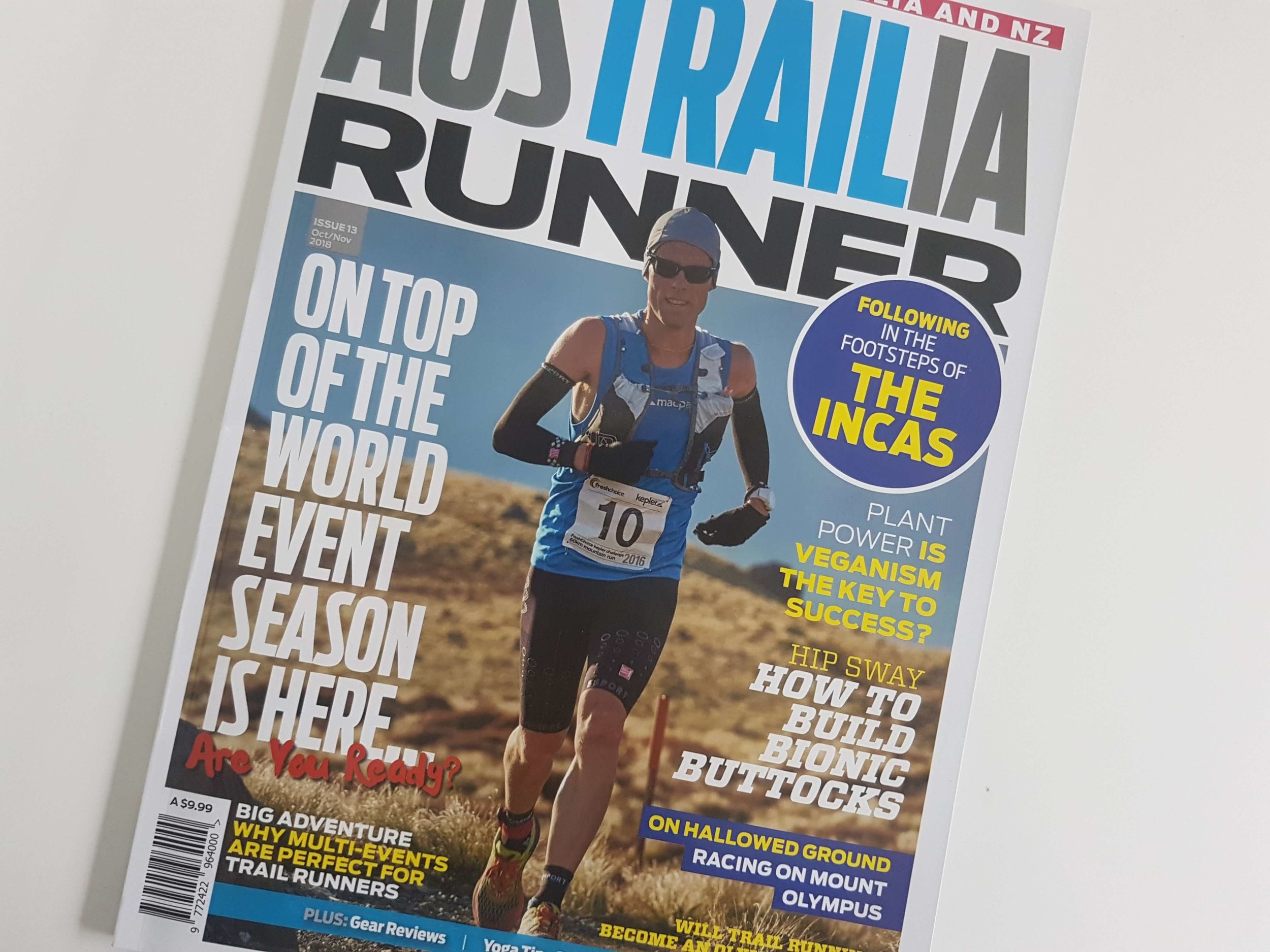In the Footsteps of Incas
Originally published: Austrailia Runner Magazine / Kiwi Trail Runner February / March 2018
“I just saw your post about your trip on the Inca Road, I live in Huanchaco, Trujillo. I checked the map and found that one road of the Qhapaq Ñan passes close to Huanchaco and continues to Chiquitoy, at the bottom of Apu Campana Hill.”
Wen Sulem contacted me after I posted on my Facebook page about an upcoming running adventure in South America. A complete stranger by every measure except one – the passion for trails that binds us all.
In my post I mentioned that I would like to explore an ancient road network. Without the benefit of gels, protein whey and electrolyte powders, Incan and pre-Incan road runners (called Chaquis) could travel for days relaying messages throughout villages using this network.
It is reported that a team of these runners could cover more than 400km in a day.
One of the most substantial roadways created is the 3,000-year-old, UNESCO-listed Qhapaq Ñan, connecting Peru, Colombia, Ecuador, Argentina, Bolivia and Chile.
The Incas lacked a system for writing, so all messages were verbally transferred. To ensure reliability within the ranks, a runner was executed if they got the message wrong.
Could you imagine what would happen if this same rule applied to modern-day trail runners, especially with their language skills after a race?
You can see how the Qhapaq Ñan caught my attention the moment I first heard about it. My vision was to run a few sections but finding usable, detailed information on accessible sections was proving elusive.
Wen’s offer of assistance felt like I had just been handed the pot at the end of the rainbow.
Over a few weeks we shared messages and within a short time I felt like I had always known Wen, he is one of those types of characters.
Wen is Peruvian-born with a Chinese bloodline, which influences his other great passion in life - food.
He has more energy and imagination than I thought possible to have wrapped up in one human being.
Wen is a relative newcomer to running, taking up the sport in 2014 to recover his health. It’s hard to imagine the person I met was once 110kg and had difficulty getting off the lounge.
Like many of us, Wen also talks about the other gains of running – confidence, friends, discipline and a great sense of achievement.
Wen’s family returned to Huanchaco on the northern Peru coastline in the early 1990’s after his father established a restaurant in the town. Wen has been in charge of the kitchen at the restaurant for five years and has continued to pursue his father’s vision of showcasing the best of local seafood with a distinct Chinese influence.
The family restaurant was the site of our first meeting. “Come on over”, Wen invited me – “I want you to try our food”.
Who was I to refuse? Over bountiful plates of food we hatched our plan for taking on the Qhapaq Ñan.
The difficulties I had finding information on sections of the Road were vindicated when Wen mentioned it had taken quite a lot of effort to track the 16km section we would be running the next morning, and even local archaeologists were vague on details.
Nature had granted us an overcast day, which was a blessing given the initial leg of our adventure was to run 16km across a coastal desert. The terrain in Peru is the reverse to Australia. The desert is on the coast, spanning through to the foothills of the Andes and then the jungle is toward the middle of the continent.
A short ride in a moto had delivered us to the outskirts of town and we had a short run to reach the start of the Road.
My mind was full of running chatter when Wen abruptly stopped and drew my attention to the reason we were here.
He pointed out two rows of rocks, roughly 20 metres apart, that had quietly sat there for centuries. Without realising it I had just taken my first steps of the Qhapaq Ñan.
Peruvians tend to wear their cultural heritage quite lightly; life continues to happen around and on what would be considered sites of substantial cultural significance in other parts of the world.
Our trail started next to a water treatment plant and small farming lots, with chicken farms marking the horizon to which we would run.
The first few hundred metres were relatively clear thanks to the rows of rocks, but those soon faded and our task for the rest of the day became to hunt down the sparse, small blue markers placed by the Ministry of Culture to designate the route among a labyrinth of other tracks used by locals. We had run to the horizon and crossed over a few dunes before we both stopped and had to admit we were struggling to know which way to go.
We knew the general direction, but our goal was to run on the Road and the blue markers were non-existent in our vicinity. I again consulted my online map, which plotted us as a blue dot in the middle of nowhere.
“We just need to find the river,” Wen stated confidently. I scanned for as far as my eyes could see and there was nothing but cactus, sand and hills.
“A river in the middle of a desert, easy done,” responded my mind.
“Then we should see the pink pyramid.”
I’m sure I had deemed Wen to be sane before we set out on this adventure. But as we all know, the best adventures always have a little dose of crazy attached and this one was starting to shape up to be epic.
On we ran, it was fun. Striding along next to each other, crossing the firm sand, making stories fit for the best adventure novels and constantly blessing the clouds above which meant we weren’t actually going to die out there.
Then it happened.
We came down off a dune and landed into a flat channel, the ground beneath our feet took on a smooth surface.
We had found the river, it was dry right now but come the rains in a few months this bed will transport large volumes of water from the hills out into the sea.
Wen looked triumphant and he had earned the right. Blue markers and a large sign secured Wen’s victory and we celebrated as only runners know how – with high-five’s and signpost selfies.
With time ticking by we now turned our attention to the next milestone – a pink pyramid.
Wen had found a river in the desert so who was I to question that a pink pyramid would soon rise on the horizon, constructed from the desert floor by Incan workers centuries before.
The huacas were points of pilgrimage for people travelling along the Qhapaq Ñan and appear along the length of the route with impressive frequency.
Raided during the Spanish invasion and subsequent treasure hunters, the finer details of the exact purpose of some huacas continues to be debated among archaeologists, but most were burial temples.
We were now on the hunt for a pink one – Huaca Colorada – the colour a trick to the eye resulting from the mineral content of the local clays. It didn’t take long before Wen stopped running and point. There is was, clear on the horizon a couple of kilometres away.
What a champion. Cheers went up and we started to run with joy toward our destination.
At the base of the huaca was an abandoned clay pot factory, an honest footnote to the layers of history that have moved through this area.
Paths showed the route for scaling the huaca and sitting atop its ridge we could see back along our route and forward to the next huacas on the distant coastline.
These were preserved monuments with a wealth of artifacts and we would be exploring those in the afternoon but taking the more conventional method of travel – a taxi.
Our day on the Qhapaq Ñan was complete and all we needed to do was run into the nearby town of Chiquitoy to grab some lunch and dream up our next adventure.


